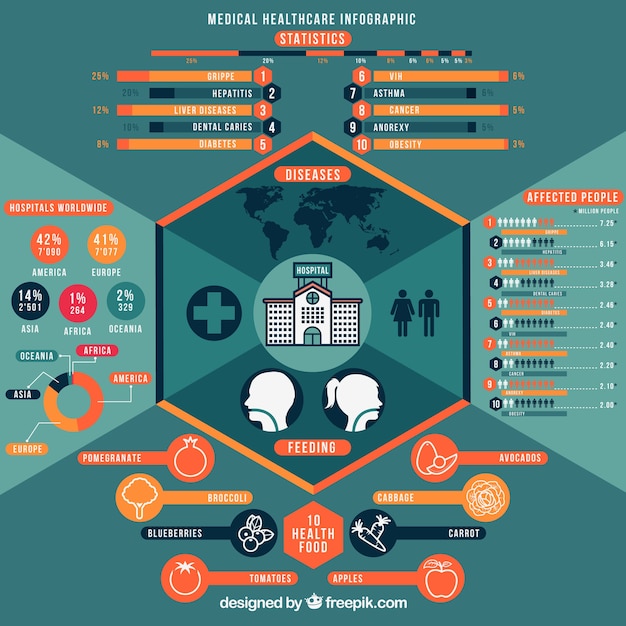Decoding Health Insurance: PPO vs HMO for US Employees

Decoding your health insurance options involves understanding the differences between PPOs and HMOs, which impact US workers through varying costs, access to specialists, and flexibility in choosing healthcare providers.
Navigating the complexities of health insurance can feel daunting, especially when trying to understand the nuances between different plan types. For US workers, two common types of health insurance plans are Preferred Provider Organizations (PPOs) and Health Maintenance Organizations (HMOs). Decoding Your Health Insurance Options: A Comparison of PPOs and HMOs for US Workers involves understanding their structures, costs, benefits, and limitations to make an informed decision that best suits your individual healthcare needs and financial situation.
Understanding the Basics of Health Insurance in the US
Before diving into the specifics of PPOs and HMOs, it’s essential to grasp the fundamental aspects of health insurance in the United States. This includes understanding key terms, the role of insurance companies, and the overall structure of the healthcare system.
Key Health Insurance Terms
Familiarizing yourself with common health insurance terms can empower you to better understand plan details and make informed decisions. Some important terms include:
- Premium: The monthly payment you make to maintain your health insurance coverage, regardless of whether you use healthcare services that month.
- Deductible:The amount you must pay out-of-pocket for covered healthcare services before your insurance company starts to pay.
- Copay: A fixed amount you pay for a covered healthcare service, such as a doctor’s visit or prescription, typically at the time you receive the service.
- Coinsurance: The percentage of healthcare costs you pay after you’ve met your deductible. For example, if your coinsurance is 20%, you pay 20% of the cost, and your insurance company pays the remaining 80%.
- Out-of-Pocket Maximum: The maximum amount you’ll have to pay for covered healthcare services in a plan year. After you reach this limit, your insurance company pays 100% of covered costs.
Understanding these terms is essential for evaluating the true cost and coverage of a health insurance plan.
What is a PPO (Preferred Provider Organization)?
A Preferred Provider Organization (PPO) is a type of health insurance plan that offers a network of preferred healthcare providers. This section delves into the defining characteristics of PPOs, how they work, and their key features.
PPOs provide more flexibility in choosing healthcare providers compared to some other types of plans. Let’s explore the details.
How PPOs Work
With a PPO plan, you have the option to receive care from both in-network and out-of-network providers. In-network providers have agreed to provide services at a discounted rate, so you’ll typically pay less when you see these providers. Here’s a breakdown of how PPOs generally function:
- Choosing a Provider: You can visit any healthcare provider you choose, without needing a referral from a primary care physician (PCP).
- In-network vs. Out-of-network: While you can see out-of-network providers, your costs will generally be higher. PPOs offer lower costs for in-network providers.
- Referrals: Referrals are usually not required to see specialists within the PPO network.
This flexibility is one of the main advantages of a PPO plan, especially if you value having the freedom to choose your doctors and specialists.

What is an HMO (Health Maintenance Organization)?
A Health Maintenance Organization (HMO) is another common type of health insurance plan, known for its emphasis on managed care and a primary care physician (PCP) acting as the central point of contact for your healthcare needs.
Understanding the structure of HMOs is vital to assessing if it aligns with your healthcare needs and preferences.
Key Features of HMOs
HMOs generally have lower premiums and out-of-pocket costs compared to PPOs, but they also have more restrictions on provider choice and require referrals to see specialists. Some key features of HMOs include:
- Primary Care Physician (PCP): You must select a PCP within the HMO network. Your PCP coordinates your care and provides referrals when you need to see a specialist.
- Referrals: Referrals are typically required to see specialists. Without a referral, your care may not be covered.
- In-network Coverage: HMOs generally only cover care received from in-network providers. Out-of-network care is typically not covered, except in emergency situations.
The PCP acts as a gatekeeper, ensuring that you receive coordinated and appropriate care within the HMO network.
PPO vs. HMO: A Detailed Comparison of Costs
One of the most important factors to consider when choosing between a PPO and an HMO is cost. This section provides a detailed comparison of the various costs associated with each type of plan.
Understanding the cost structure of each plan can help you determine which option is more budget-friendly for your situation.
Premiums, Deductibles, and Copays
Let’s compare the costs of PPOs and HMOs in terms of premiums, deductibles, and copays:
- Premiums: HMOs typically have lower monthly premiums compared to PPOs. This is because HMOs have stricter rules about provider choice and referrals, which helps control costs.
- Deductibles: HMOs often have lower deductibles than PPOs. Some HMOs may even have no deductible at all.
- Copays: Copays can vary between PPOs and HMOs, but HMOs often have lower copays for primary care visits.
Keep in mind that while HMOs may have lower upfront costs, you’ll need to factor in the restrictions on provider choice and the need for referrals.

Flexibility and Choice: PPO vs. HMO
Beyond cost, the level of flexibility and choice offered by a health insurance plan is a crucial consideration. This section examines the differences between PPOs and HMOs in terms of provider choice, referrals, and access to specialists.
Your preference for flexibility and control over your healthcare decisions should heavily influence your plan selection.
Provider Choice and Referrals
The freedom to choose your healthcare providers and whether or not you need referrals are key differentiators between PPOs and HMOs:
- PPO Flexibility: PPOs offer greater flexibility in provider choice. You can see any provider you want, without needing a referral.
- HMO Restrictions: HMOs require you to choose a PCP within their network, and you typically need a referral to see a specialist.
If you value having the ability to see any doctor or specialist without restrictions, a PPO may be a better fit. However, if you’re comfortable with a PCP coordinating your care and providing referrals, an HMO could be a cost-effective option.
Making the Right Choice for You: Factors to Consider
Choosing between a PPO and an HMO is a personal decision that depends on your individual healthcare needs, preferences, and financial situation. This section outlines key factors to consider when making your choice.
Carefully evaluating these factors will help you make an informed decision and select the plan that’s right for you.
Assess Your Healthcare Needs
Begin by assessing your healthcare needs and those of your family. Consider the following questions:
- Do you have any chronic medical conditions that require regular care from specialists?
- Do you prefer to have a PCP who coordinates your care?
- How often do you see a doctor or specialist each year?
If you have specific healthcare needs that require frequent access to specialists, a PPO may be more suitable. If you prefer a coordinated approach to care and are comfortable with a PCP, an HMO could be a good choice.
| Key Aspect | Brief Description |
|---|---|
| 💰 Premiums | HMOs often have lower monthly premiums than PPOs. |
| ⚕️Provider Choice | PPOs offer more flexibility; HMOs require a PCP for referrals. |
| 📍 Out-of-network | PPOs cover (at a higher cost); HMOs often don’t cover unless it’s an emergency. |
| 🏥 Referrals | Typically not required for PPOs; usually required for HMOs to see specialists. |
Frequently Asked Questions (FAQ)
▼
The primary difference lies in flexibility and cost. PPOs offer more freedom in choosing healthcare providers but typically have higher premiums. HMOs are more restrictive but usually have lower costs.
▼
Generally, no. One of the key advantages of a PPO is that you can typically see specialists without a referral from a primary care physician.
▼
Usually, no. HMOs typically only cover care received from providers within their network, except in emergency situations. Always confirm with your specific plan details.
▼
A PPO might be more suitable if you travel frequently, as it offers coverage for out-of-network providers, although at a higher cost. An HMO could limit your coverage while traveling.
▼
You can typically find this information on your insurance company’s website, or by calling their customer service line. They can provide a list of in-network providers in your area.
Conclusion
Choosing between a PPO and an HMO depends heavily on your healthcare needs, budget, and preferences for provider choice and coordination of care. Evaluating these factors carefully will help American workers make an informed decision, selecting a health insurance plan that provides both financial security and peace of mind regarding healthcare access.





